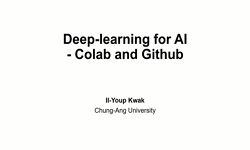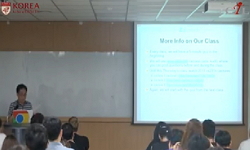Ⅰ. 연구의 배경 및 목적 ㅇ 해양에서 다양한 개발사업이 이루어지고 있으며 개발로 인한 환경적 영향을 예측·평가하여 저감방안을 마련하고 있음 ㅇ 복잡한 해양환경적 특성으로 인해 개...
http://chineseinput.net/에서 pinyin(병음)방식으로 중국어를 변환할 수 있습니다.
변환된 중국어를 복사하여 사용하시면 됩니다.
- 中文 을 입력하시려면 zhongwen을 입력하시고 space를누르시면됩니다.
- 北京 을 입력하시려면 beijing을 입력하시고 space를 누르시면 됩니다.
딥러닝을 활용한 해양오염 예측도구 개발 및 적용 연구 (Ⅰ) = A Study on Marine Pollution Prediction Using Deep Learning and its Application (Ⅰ)
한글로보기부가정보
국문 초록 (Abstract)
Ⅰ. 연구의 배경 및 목적
ㅇ 해양에서 다양한 개발사업이 이루어지고 있으며 개발로 인한 환경적 영향을 예측·평가하여 저감방안을 마련하고 있음
ㅇ 복잡한 해양환경적 특성으로 인해 개발사업이 해양환경에 미치는 영향을 파악하는 데는 한계가 있음
ㅇ 해양환경 정보화플랫폼의 자료, 위성자료, 기존의 수치모형에서 계산된 방대한 물리적 자료를 딥러닝 기술에 적용하여 해양오염 예측 도구를 개발하고자 함
Ⅱ. 국내외 현황 및 사례 분석
ㅇ 해양 분야에서 딥러닝을 활용한 연구를 예측(결측치 보정 포함) 및 분류 연구로 구분하여 정리함
ㅇ 해양 분야가 아닌 타 분야에서 딥러닝을 활용한 연구도 정리함
Ⅲ. 연구 방법론
1. 해양환경자료
ㅇ 해양환경, 해양생태, 해양보호구역, 해양환경정보지도, 폐기물해양배출, 해양쓰레기, 해역이용영향평가 등과 관련된 다양한 자료를 제공하는 해양환경정보포털(MEIS)의 자료를 검토함
ㅇ 2010년부터 천리안 위성(COMS: Communication, Ocean and Meteorological Satellite)을 통하여 해양관측을 수행하고 있으며, 위성으로부터 제공되는 자료를 조사함
2. 수치모형
ㅇ 해양의 유동, 지형, 파랑, 수질까지 다양한 영역의 해양환경 변화를 파악할 수 있는 수치모형 중에 연안역에서 널리 사용되는 Delft3D를 소개함
3. 딥러닝 모델
ㅇ 딥러닝 알고리즘은 입력 데이터의 형태에 따라 활용할 수 있는 모형이 다르기 때문에 주요 모형에 대해서만 설명함
ㅇ 딥러닝 모형이 사용된 연구 사례를 소개함
Ⅳ. 적용 및 검증
1. 파랑 예측
ㅇ 딥러닝의 적용 사례연구로서 외해에서 장기간 관측된 파랑 및 기상자료와 딥러닝 기법을 활용하여 해안역 인근의 일 년간의 파랑을 예측함
ㅇ 60km 이상 이격된 해역의 기상정보와 파랑정보를 활용하여 해안가 인접지역의 파랑 자료를 간접적으로 추정할 수 있음
2. 농도 확산
ㅇ 파랑 예측 사례는 단일지점의 자료를 이용하여 추정값을 산출하였다면 금번 사례연구는 공간적 자료를 활용하여 딥러닝 기법의 효율성을 검증함
3. 실해역 적용
ㅇ 연구해역에서 시공간적인 물리 인자를 생성하기 위하여 수치모형을 구동하고 위성관측자료를 활용하여 용존 유기물질, 클로로필-a, 총부유물질, 수중 가시거리에 대한 공간 자료를 생성함
ㅇ CNN 모형을 활용하여 딥러닝 모형을 구축하고 클로로필-a를 추정함
Ⅴ. 결론 및 제언
ㅇ 다양한 분야에 적용되고 있는 딥러닝 기술을 활용하여 연안역에서 플랑크톤 시·공간적 변화를 예측하는 도구를 개발함
ㅇ 개발된 예측모형에 대한 정확도 및 신뢰성을 높이기 위하여 추가적인 연구 및 분석이 필요함
ㅇ 딥러닝 예측 기술의 추가적인 개발은 기존 기술과 함께 시너지 효과를 발생시켜 환경정책계획 수립에 기여할 수 있음
다국어 초록 (Multilingual Abstract)
Ⅰ. Aims and Purposes of the Research ㅇ Various development projects in the coastal areas have been carried out, and mitigation methods to reduce their impact on the environment have been under development based on the prediction and evaluation. ...
Ⅰ. Aims and Purposes of the Research
ㅇ Various development projects in the coastal areas have been carried out, and mitigation methods to reduce their impact on the environment have been under development based on the prediction and evaluation.
ㅇ There are many limitations in understanding the impacts of development projects on the marine environment.
ㅇ We intend to develop a marine pollution prediction tool by applying data from the Marine Environment Information System (MEIS), satellite data, and physical data calculated from the numerical model to deep learning technology.
Ⅱ. Domestic and Foreign Status and Case Analysis
ㅇ Deep learning studies applied in the marine field were classified and organized into prediction (including missing value correction) and classification studies.
ㅇ Deep learning research conducted in fields other than the marine field is also briefly summarized.
Ⅲ. Methods
1. Marine environment data
ㅇ Data from the MEIS which provides various data related to the marine environment, marine ecology, marine protected areas, marine environment information map, and marine waste discharge were investigated.
ㅇ Satellite data produced through the Communication, Ocean and Meteorological Satellite (COMS) operated since 2010 were reviewed.
2. Numerical model
ㅇ Delft3D, widely used in coastal areas, is described as a numerical model that simulates changes in the marine environment such as hydrodynamics, sediment transport, waves, and water quality.
3. Deep learning model
ㅇ In regard to deep learning models, only the main models are explained because the models that can be used are different depending on the type of input data.
ㅇ We introduced research cases to which deep learning models are applied.
Ⅳ. Application and Verification
1. Wave prediction
ㅇ As a case study of the application of the deep learning model, the waves for a year near the coastal area were predicted using the deep learning model.
ㅇ It is possible to indirectly estimate the wave data adjacent to the coast using the meteorological and wave information from the open sea 60 km away.
2. Diffusion experiment
ㅇ In the case of wave prediction, the model predicted waves using data from a single point, but this case study showed that the deep learning model is also effective for spatial data prediction.
3. Application to actual sea areas
ㅇ Using a numerical model for the study area, spatial and temporal physical data were generated. In addition, data on dissolved organic matter, chlorophyll-a, total suspended sediment, and visibility were generated from satellite ocean color observations.
ㅇ A deep learning model was constructed using the CNN technique and chlorophyll-a was estimated.
Ⅴ. Conclusion and Suggestion
ㅇ A tool for predicting plankton changes in coastal areas was developed using deep learning technology
ㅇ Further research and analysis are required to increase the accuracy and reliability of the developed prediction tool in this study
ㅇ Additional development of deep learning prediction tool can contribute to establishing effective environmental policy plans by generating synergies with existing tools
동일학술지(권/호) 다른 논문
-
- 한국환경정책평가연구원
- 김호석
- 2020
-
- 한국환경정책평가연구원
- 정우현
- 2020
-
친환경적 데이터 응용기술 활용 정책개발을 위한 기획연구
- 한국환경정책평가연구원
- 강성원
- 2020
-
- 한국환경정책평가연구원
- 김호석
- 2020




 KISS
KISS






